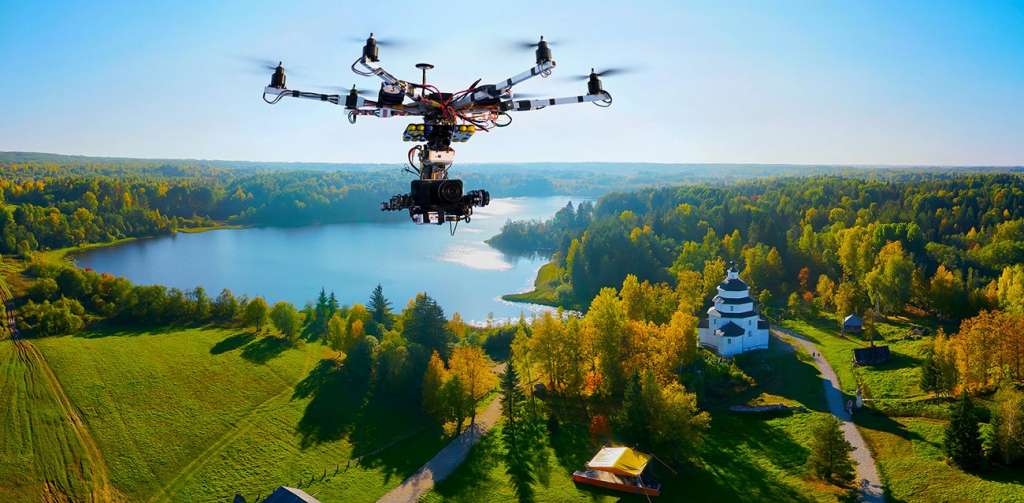Drones play a crucial role in making precision farming more accessible and effective. They provide a bird’s-eye view of the fields, enabling farmers to identify and address issues with pinpoint accuracy. Precision farming, often referred to as precision agriculture, is an approach that aims to optimize crop production by tailoring treatments and interventions to the specific needs of different parts of a field. This results in reduced resource wastage and increased crop yields.
Crop Health Assessment
Drones equipped with multi-spectral and thermal imaging cameras can capture detailed images of crops. These images reveal valuable insights into the health of the plants. By analyzing the data collected, farmers can identify stressed or diseased areas early in the growing season. This allows for timely intervention, such as targeted pesticide application or irrigation adjustments, preventing the spread of diseases and ultimately preserving crop quality.
Yield Estimation
Estimating crop yields accurately is a critical aspect of farming. Traditionally, it required labor-intensive manual sampling and calculations. Drones have simplified this process by providing farmers with a comprehensive view of their fields. By employing specialized software, farmers can measure plant density and predict yields with greater precision. This information helps in planning harvest schedules and storage requirements.
Irrigation Management
Water is a precious resource, and effective irrigation management is vital for sustainable agriculture. Drones can assess the moisture levels of the soil and detect areas that require more or less irrigation. This data-driven approach ensures that water is distributed efficiently, reducing over-irrigation and saving resources. Furthermore, it aids in preventing water stress in crops, leading to healthier and more productive plants.
Pest and Weed Control
Crop protection is a constant concern for farmers. Drones equipped with thermal cameras can detect variations in temperature caused by the presence of pests or weeds. Once identified, targeted pesticide or herbicide application can be carried out in these specific areas, reducing the need for widespread chemical use and minimizing the impact on the environment.
Fertilizer Management
Efficient fertilizer application is key to crop health and reducing environmental impact. Drones can analyze the nutrient levels in the soil and generate maps indicating where fertilization is needed most. This results in more precise fertilization, reducing costs and preventing excess nutrient runoff into water bodies, which can lead to pollution.
Field Mapping and Planning
Drones provide farmers with highly detailed aerial images of their fields. These images are valuable not only for current-season monitoring but also for long-term planning. Farmers can create detailed field maps, identifying different zones within the fields, each with its own specific characteristics. This allows for tailored planting, harvesting, and maintenance strategies for each zone, maximizing efficiency and crop quality.
Time-Efficiency
One of the significant advantages of drone technology is the time-efficiency it offers. Drones can cover vast expanses of farmland in a short amount of time, reducing the labor required for crop monitoring. This time-saving benefit allows farmers to focus on other essential tasks, improving overall farm management.
Challenges and Considerations
While drone photography in agriculture offers numerous advantages, it also presents challenges. One of the primary concerns is the cost of initial investment, including the purchase of drones and related technology. Additionally, farmers need to acquire the skills to operate drones and interpret the data collected effectively. Moreover, regulations and restrictions surrounding drone usage, such as air traffic and privacy laws, must be adhered to.
Drone photography in agriculture has ushered in a new era of precision farming, offering farmers the ability to monitor crops with unprecedented detail and accuracy. By enhancing crop health assessment, yield estimation, irrigation management, pest and weed control, and more, drones are proving to be invaluable tools for modern agriculture.
While challenges exist, the potential benefits in terms of increased yields, resource conservation, and overall farm efficiency make drone technology a worthy investment for forward-thinking farmers. As technology continues to advance, the role of drones in agriculture is only expected to grow, further revolutionizing the way we produce food.
